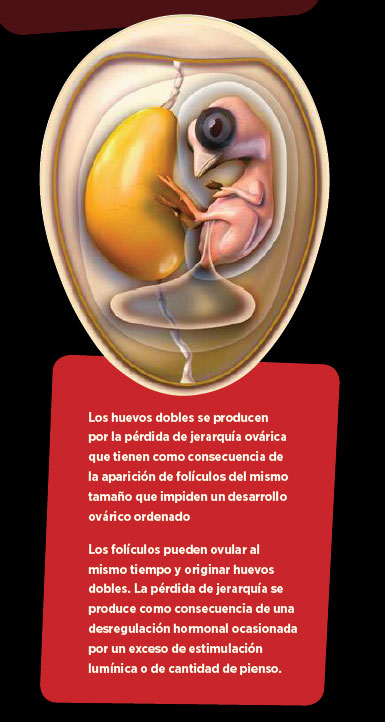Percent of hatching eggs
Hatchery
Classification of non-hatching eggs from breeder flocks
To read more content about aviNews 2019 ENG
Hatchery
To read more content about aviNews 2019 ENG
Content available at:
Español (Spanish)
Classifying hatching eggs allows us to identify possible problems or inefficiencies that occur in breeder farms. Additionally, hatchery performance results depend largely on the quality of the hatching eggs they receive, thus this classification concept also helps us to improve incubation results.
Percent of hatching eggs
The most frequent way to carry out the classification of breeder eggs is the percentage of hatching eggs with respect to the total number of eggs, with the first step establishing their correct use, and the indicators of which depend on:

Double yolk eggs
Double yolk eggs can cause significant economic losses because chicks do not survive the incubation process. Double eggs in broiler breeder flocks are considered normal but always within limits.
Factors that promote double yolk eggs
When classifying misshaped eggs, we include round and elongated eggs, those that are flattened from one side and grooved and rough shells. It is very difficult to obtain viable chicks from suchs eggs, mainly because:
The percentage of deformed eggs increases from start to peak of lay, with a maximum of 0.8%. From the laying peak, the number of deformed eggs is less than 0.2%. The variability regarding the percentage of deformed eggs, in many cases, is not related to the environmental, management or nutritional conditions of the birds, but rather depends on the criteria of the person collecting the eggs.